What are Keshi Pearls & How to Wear Them?

Absolutely everyone has heard about Pearls! Beautiful piece loved by everyone!
Pearl is a charming valuable stone primarily created by a mollusk living under the sea. Wearing pearls has various astrological advantages. The moon, the planet of emotions, rules this priceless jewel. There are wide varieties of pearls that can enhance your look and give you a mesmerizing charm. However, occasionally pearls appear in ways that are different from their typical shapes due to a natural occurrence or phenomenon. Keshi Pearls are one of them!
The Japanese word for poppy seed, keshinomi, is the source of the word "Keshi." It can be challenging to explain these exceptional pearls adequately. Despite their unusual sizes and shapes, they are not baroque pearls. They can have an almost wavy-like surface texture in addition to occasionally appearing a little flat, a little plump, and occasionally both.
100% pearl... no nucleus, all nacre!
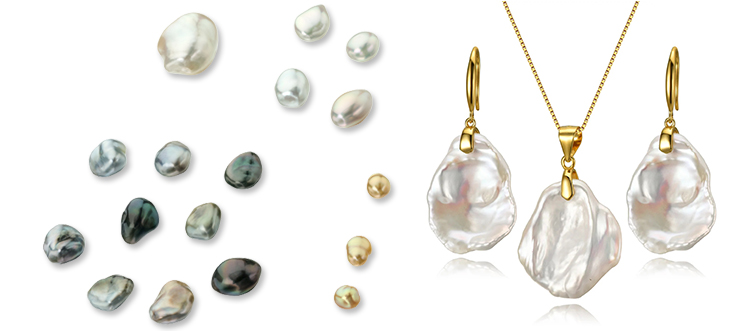
When a cultured pearl is developing within an oyster, sometime the mollusk secretes more nacre (primary substance for pearl formation) than required, and the time that extra nacre hardens and deposits on an oyster's lip, Keshi pearls are formed.
Keshi Pearls are adored for their natural shapes, eye-catching colors, and very high luster. Jewelry designers frequently utilize them to create extraordinary, one-of-a-kind items that stand out from the rest and become wearable statements of one's individuality. Keshi's surface is frequently extraordinarily smooth, and their shapes might be a baroque, semi-baroque, round, button, drop, or oval.
Keshi Pearls FAQs
Is Keshi Pearls Natural Pearls?
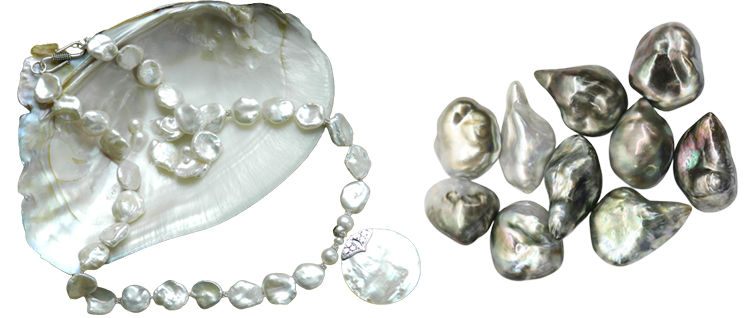
When a mollusk, such as an oyster or a snail, develops layers of nacre around a particular sort of irritant in its shell, pearls are created. A nucleus placed into the soft mantle tissue of the oyster causes cultured pearls to develop around it. However, there is no nucleus present within natural pearls as they form.
Keshis, the most lustrous and breathtaking pearl, can form naturally in any nacreous pearl during pearl production. They are all-natural as they are made entirely of nacre (because there is no nucleus inside). They develop as a byproduct of cultivation. They are extremely valuable because they are composed entirely of nacre, a priceless substance, and excess nacre deposited on the lip of the oyster becomes a Keshi Pearl. They are sold by weight, just like jewels, because of this. All Keshi pearls are genuine, one-of-a-kind-jewels made of priceless and rare materials.
What makes Keshi Pearls so unique & special?
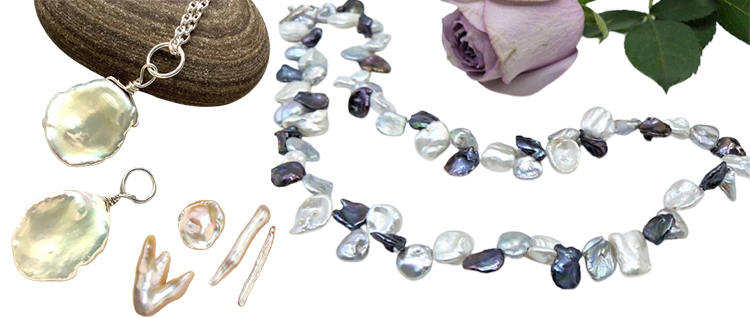
With the naked eye, it isn't easy to distinguish between the natural and the artificial. Its properties must be ascertained, along with its features. As previously stated, the Keshi pearls are small, non-nucleated pearls that form a byproduct of pearl farming. Let's now discuss specific characteristics of the gemstones known as Keshi pearls, which have moon power.
· Keshi pearls are created without a nucleus. Therefore, their shapes tend to be more ornate, with round kesh being uncommon. Oval, flat, thin, semi-round, and rice are other shapes. One thing that distinguishes and attracts Keshi pearls is their distinctive and organic shapes.
· As precisely spherical pearls are lovely, modern preferences are getting more diverse, and we are experimenting with a broader range of shapes.
· Keshis are incredibly lustrous pearls; nothing can prevent the light from reflecting off them as they are formed of pure nacre. Keshi pearls have a stunning luster that shimmers and shines, and their color and brilliance never change over time, much like other valuable stones.
· Keshi pearls can be found in all cultured pearls, including freshwater, Tahitian, Akoya, and South Seas. They can develop in saltwater pearls as well. However, they are more prevalent in producing freshwater pearls.
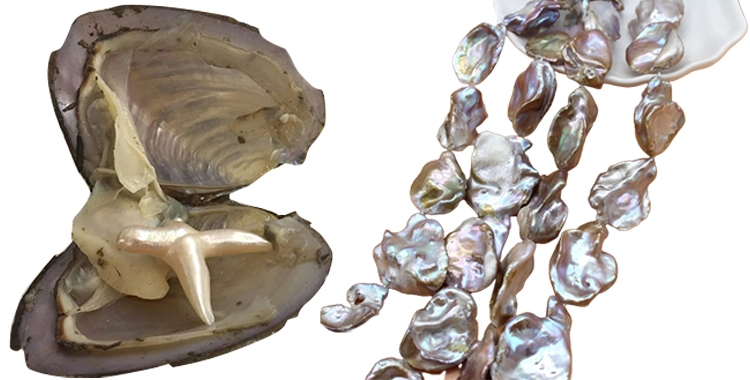
Whether you appreciate their distinctive shapes, bright luster, or all-natural value, Keshi pearls are a crucial component of any pearl lover's fine jewelry collection.
How Are Keshi Pearls Formed?
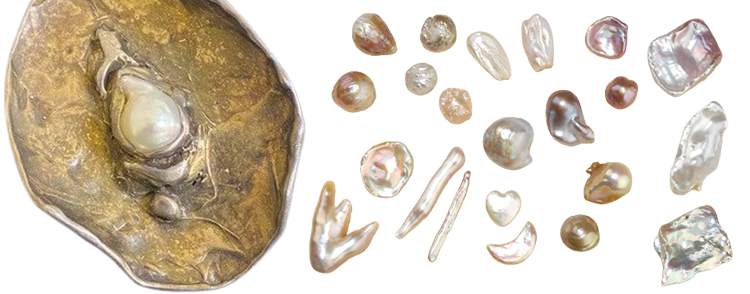
Now the main question comes! "How Are Keshi Pearls Formed?" This is the focal point of this eye-catching pearl piece! Let's understand the process of formation of Keshi pearls:
Keshi pearl can develop in every type of nacreous pearl and form naturally during pearl cultivation. There is priceless, shiny material that makes up a pearl called nacre, and sometimes the mollusk secretes more nacre than is required when a cultured pearl is forming within an oyster. When extra nacre hardens and deposits on an oyster's lip, it is the time when Keshi pearls are formed. Keshis always have organic shapes since they emerge in such a natural method. Many of them are lean and long & Others are small and complex. But overall, each one is lovely.
Below are a few points that can be a reason for Keshi pearl to grow:
• Mistakes in cultivation occur when a mantle tissue graft separates from an implanted nucleus. Due to this, the intended nucleated pearl fails, and a smaller Keshi pearl develops.
• An attack on a mollusk that produces pearls by a predator that bores through its shell is similar to how natural pearls form in the wild, except a captive mollusk is more susceptible.
• Mollusks injuries brought on by mishaps, including putting shell fragments into mantle tissue.
• Keeping pearl-bearing freshwater mollusks alive after the (first round of pearls) harvesting of pearls.
• The most popular method for growing freshwater pearls is still deliberate non-nucleated cultivation.
Therefore, these pearls can be the answer if you seek a creative and reasonably priced gemstone to add to your jewelry designs.
Where Do They Come From?

As was already mentioned, the term "Keshi" first appeared in Japan to particularly define tiny pearls created by loose tissue in Akoya oysters. Tahitian Keshi, freshwater Keshi, South Sea Keshi, and more! Keshi pearls can come from everywhere! They can be created anywhere in the world that cultivates pearls. Keshis are not cultured pearls, even though they are made on farms that make cultured pearls. They are the pearls of their class.
Japanese Keshi Pearls
The magnificent beauty of Japanese pearls is renowned around the world. Japan has a thriving pearl industry, and pearls from Japan are in high demand in jewelry markets worldwide. The cultured sea pearls known as Akoya pearls are frequently recognized as Japan's most beautiful when speaking of national pearls. Only the Japanese Akoya Oyster, found in the Sea of Japan, produces genuine Japanese Keshi pearls.
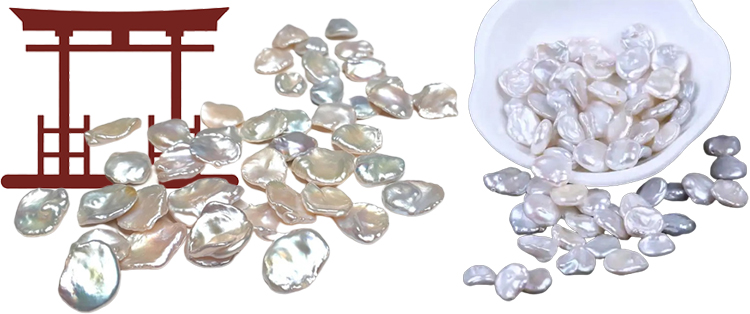
The Japanese started cultured Akoya pearl production in the 1920s. They noticed many tiny pearls after the first harvest, which they named Keshi, Japanese, for "poppy." While they were hesitant to throw away these incredibly beautiful nacre jewels, they also wanted to save themselves the hassle of sorting, stringing, and selling these seed pearls.
Due to their modest, distinctive size and lack of a nucleus, these pearls were initially considered useless. But these pearls are now among the most loved ones.
How to Wear Keshi Pearls
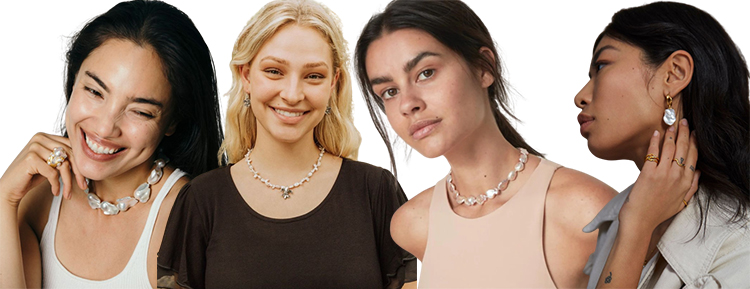
Keshi Pearls' remarkable shine will undoubtedly reflect a radiant light onto your skin, regardless of how you decide to wear them. Those who adore pearls consider Keshi to be exceptional pearls that are highly valuable and one-of-a-kind.
Styling the Keshi Pearls
The most distinctive pearl, Keshi Pearl, is the ideal way to express one's individuality due to its organic shapes and incredible shine. Add drama and excitement to basic and plain fabrics or your wardrobe with these beautiful gems.
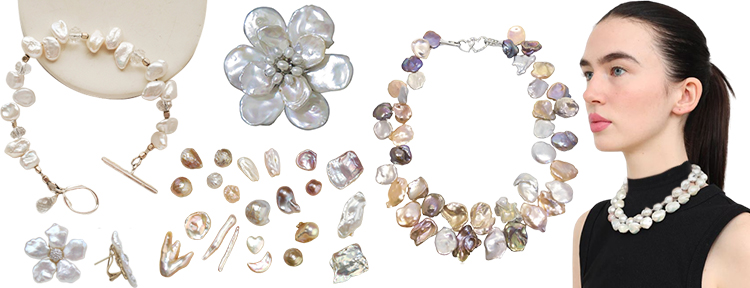
• The vibrant Keshis can infuse energy and excitement into neutral or solid-colored fabrics or wardrobe essentials like turtlenecks, sweaters, and suits.
• Keshi pearl brooches, strands, bracelets, or rings are popular ways to upgrade their classic pearl jewelry. They can be layered with any pearl type or worn as statement necklaces.
• They come in colors like white, pink, cream, champagne, golden, silver, green, black, pistachio, and peacock, and you can style them with your clothes as per your choice and style.
• Keshi pearls' organic appeal combined with more traditional jewelry designs results in a new, exciting, and highly distinctive aesthetic.
Nowadays, most women love these incredible pearl pieces! Let's explore some of the beautiful Keshi pearls jewels that enhance your beauty and overall look.
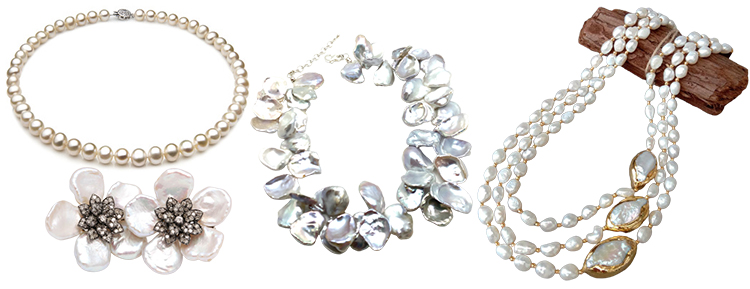
· Real Freshwater Pearls Necklace: Hottest in fashion jewelry, giving a glittering royal appearance.
· Freshwater Cultured Keshi Pearl necklace: Simply unique and gorgeous.
· Diamond Studded Keshi Pearl Earrings: The authentic Tahitian sea Keshi pearl earrings are ideal for enhancing the overall look.
· Natural White Baroque Keshi Pearls necklace: the perfect addition to the collection of pearl jewelry.
The most popular colors are pure white, off-yellow white, and shades with a blue undertone. They become even more valuable and magnificent when designed into beautiful jewelry pieces.
Whether you adore their beautiful shine, their distinctive shapes captivating, or the fascinating process they form, Keshi pearls are a must-have for any pearl fan. If you wear Keshi Pearls, you'll undoubtedly receive compliments, so take them out of the jewelry box whenever you need a little boost to your self-confidence. If you haven't explored it yet, you must at least try one collection of these pearls!
It Might Make You Fall In Love!


Leave a Comment